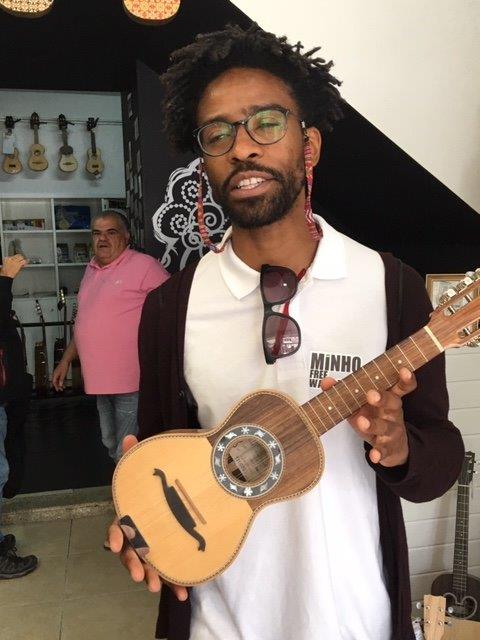
Braga is the seventh biggest city in Portugal with a population of about 200,000 people. It was founded by the Romans over 2,000 years ago but was Christianised very early on. They say that Porto works, Lisbon spends and Braga prays. That is not difficult to believe as there are over 100 churches in Braga! As it is a university city it has a young vibe.
It was only about a 5 minute walk from the railway station to our modern apartment so not far to carry our luggage. From there it was just another five minutes to reach the remaining city gate, the Porta Nova Arch.
The best thing about the old town, which was once walled, is that it is quite small and many of the city streets are car-free so it was easy to walk across it in any direction in about 10 minutes
In most streets, there was an old building to admire (usually a church or a palace). Many had been designed in the 18th Century by local architect and sculptor Andre Soares. An exception was the cathedral which was built much earlier in the eleventh century. The Cathedral museum containing ancient sculptures, vestments and other religious paraphernalia was worth a browse.
We went on a “free” city walk led by a Braga University student. Our guide had lots of tales to tell. He told us the ukulele was born in Braga. In the late 19th century a group of Portuguese emigrants heading for Hawaii took their ukuleles with them where they were enthusiastically adopted. We looked at some Braga ukuleles in a local music shop.
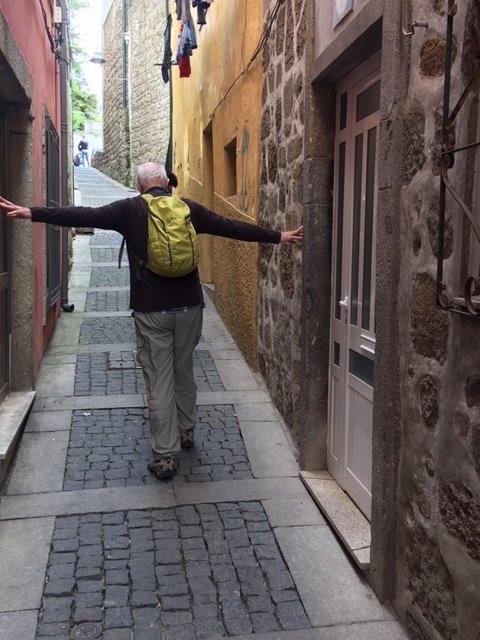
Then he took us to Gneration, a multimedia hub in a contemporary building once owned by the National Guard. Here we had a quick peek at Wavelengths of Light, an interactive installation. We have been so immersed in ancient churches and buildings throughout our European journey that it made a nice change to learn about Braga’s modern side.
There is also a big Nanotechnology Lab In the town and on the outskirts a large football stadium with room for over 30,000 spectators. Football is a national obsession here. One evening when a game was on the streets were filled with exuberant noisy supporters.
As part of a local music festival there was a free church concert so we went and had a most enjoyable evening. The music was by Scarlatti et al with organ, trumpet and soprano.
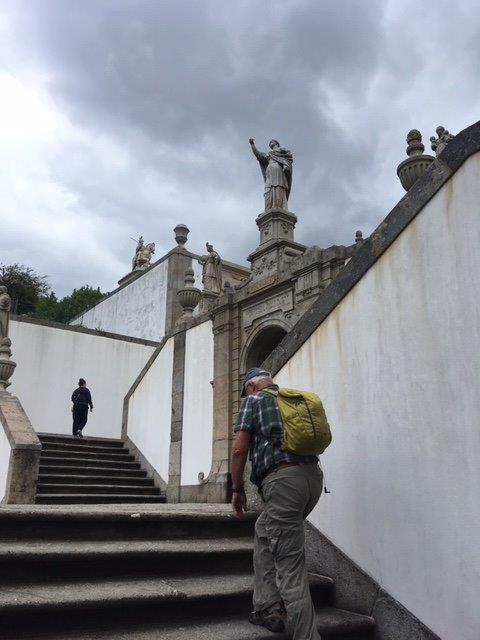
The Bom Jesus sanctuary (which means Good Jesus of the Mount) is one of Braga’s most popular tourist attractions and a UNESCO World heritage site. It was about 15 minutes away by city bus. Penitents climb the 577 marble steps leading up to it during Holy week on their knees, not for us! But we did walk up unlike most of the other bus passengers who chose to ride the easy way up in the old funicular.
On the way there were small fountains dedicated to the five senses and three virtues. At each one we took a breather. As we approached the summit the view of the neo-classical church was spectacular!
We ate well in Braga, and eating out was cheap. Two coffees and two cakes cost us only about NZ $6 in a cafe that been in its present position for over 200 years. When they carried out renovations 20 years ago they found the ruins of an old Roman house underneath. The floor has been covered in thick glass so you can see the old brick and stone work.
But I will be happy not to see another bacalhau (salted cod fish) meal for a while. Portugal’s most iconic and popular fish is tasty and can reputedly be served in 365 different ways but you can have too much of it. Fortunately there is always other seafood on offer. I had one very slippery meal of black linguine, cockles and salmon which was quite superb but tricky to get from plate to mouth.
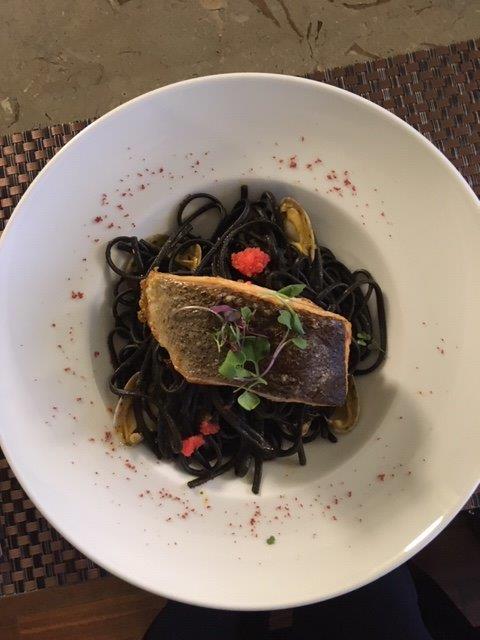 The wines were very cheap, and good which could almost drive you to drink! We never did try the myriad of wines under three dollars a bottle. But there were excellent reserve wines from the Duoro valley for seven or eight dollars.
The wines were very cheap, and good which could almost drive you to drink! We never did try the myriad of wines under three dollars a bottle. But there were excellent reserve wines from the Duoro valley for seven or eight dollars.
We really enjoyed our short stay in this small city. It had a laid back atmosphere but there was plenty to do and see. From there we would catch a suburban train to Porto, about 75 minutes away. Porto is apparently steeper even than Wellington as well as being the home of port wine. We were looking forward to it.
Reviews by Lyn Potter
Parent and grandparent, Avid traveler, writer & passionate home cook







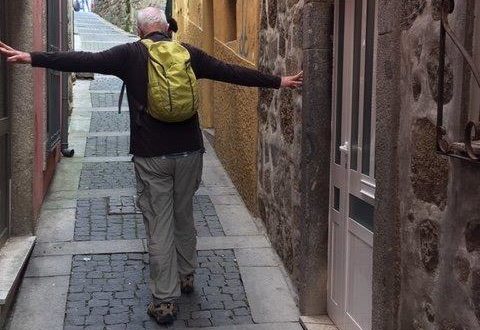
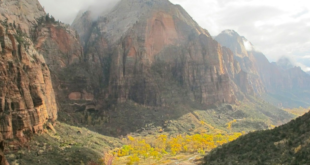
Join the Discussion
Type out your comment here:
You must be logged in to post a comment.